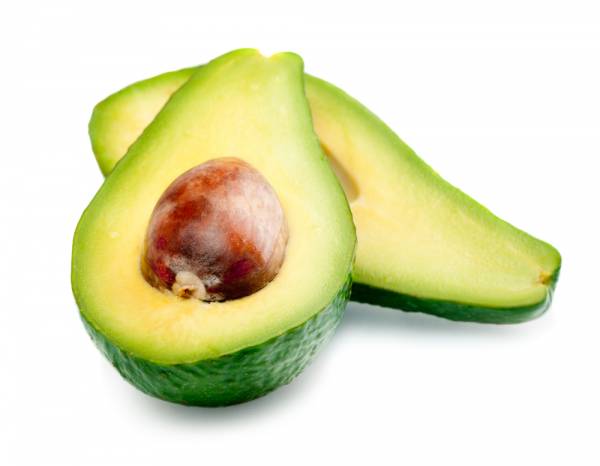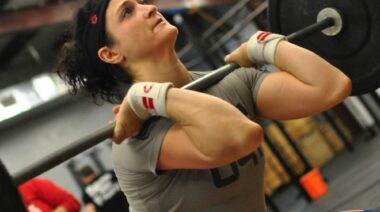This week, in part five of my series on the ins and outs of vitamins, we will look at the cholesterol producing all-arounder known as vitamin B5. That might sound strange that we want a cholesterol producer, but it’s actually quite essential in our bodies.
What Does Vitamin B5 (Pantothenic Acid) Do?
Vitamin B5, also called pantothenic acid, is the fourth of eight B vitamins. The name of the vitamin comes from “pantos” a Greek word meaning “everywhere,” which reflects the fact that this vitamin is available in a wide variety of foods. In its metabolically active form, vitamin B5 combines with a sulfur-containing molecule to form coenzyme A (CoA), which is used in a wide variety of chemical reactions in the body.
In its CoA form, vitamin B5 helps release energy from sugars, starches, and fats. This energy release occurs in the mitochondria. Two chemical changes are required, the first is vitamin B5’s conversion into CoA and the second change is called acetylation, which is where the CoA form converts back into acetyl CoA. This is a continual process that is occurring in our cells. This means that vitamin B5 helps to provide fat in its acetyl CoA form, and is involved in the transport of the fat from the cytoplasm into the mitochondria.
The CoA form of vitamin B5 is quite important for the creation of fats in the body. Both fatty acids and cholesterol require vitamin B5 in its CoA form. While we know excess cholesterol is bad, we couldn’t actually live without some amount of it.
In addition, there has been some interest in vitamin B5 as a potential aid for physical training. It seems that marathon runners have increased B5 levels in their blood allowing for a more prolonged energy release, although research on cyclists proved of no benefit. Vitamin B5 is also used to manufacture red blood cells and to help in the production of both sex- and stress-related hormones produced by the adrenal glands. It is also important in maintaining a healthy digestive tract, and it helps the body use other vitamins, particularly B2.
Foods Rich in Vitamin B5
The best sources of vitamin B5 are brewer’s yeast, corn, cauliflower, kale, avocado, legumes, lentils, egg yolks, broccoli, tomatoes, beef (especially organ meat), turkey, duck, chicken, sweet potatoes, sunflower seeds, whole-grain breads and cereals, wheat germ, and salmon. It should also be noted that vitamin B5 is damaged during the cooking process.

Vitamin B5 Synergistic Nutrients
Nutrients that can help with absorption of vitamin B5 are vitamins B1, B2, B3, B12, and C, as well as biotin, folate, chromium, glycine, phospate, sodium, potassium, and zinc.
Vitamin B5 Deficiency
It is rare for someone to be deficient in vitamin B5 in the modern world. A deficiency of vitamin B5 is generally related to having low energy symptoms due to its role in energy production in the body. Symptoms include fatigue and general weakness. A rare vitamin B5 deficiency known as “burning foot syndrome” involves numbness and tingling, along with burning and shooting pain in the feet.
Vitamin B5 Side Effects
Vitamin B5 taken in doses of 2 or more grams per day can result in a case of mild diarrhea. In fact, lower doses have been used to treat cases of constipation. The good news is that this amount is actually hundreds to thousands times more than the recommended dietary allowance levels and no other toxic symptoms have ever been reported.
Vitamin B5 Researched Uses
High Cholesterol/High Triglycerides – It is thought that pantethine, which is a dimeric form of pantothenic acid, may reduce triglycerides in the blood of people who have high cholesterol. It has also been shown to lower LDL and raise HDL levels. Some studies have even been shown to lower blood lipid levels in people with diabetes, but more extensive research needs to be done as results have been inconsistent from study to study.
Wound Healing – Limited human trials have been carried out but it is suggested that the supplementation of vitamin B5 may help speed up wound healing, particularly after surgery. It is thought that this could be further enhanced in combination with vitamin C.
Rheumatoid Arthritis – Even though the evidence is currently weak, studies suggest that pantothenic acid may help reduce the symptoms of rheumatoid arthritis, as it is possible that people with rheumatoid arthritis may have lower levels of vitamin B5 in their blood. However, once again more extensive research needs to be carried out to confirm these findings.
Vitamin B5 Recommended Intake
It is recommended to get the following amounts of vitamin B5 per day:
- Infants: 1.7mg up to 6 months and 1.8mg up to 12 months
- Children: 2mg a day up to 3 years, 3mg a day up to 8 years, and 4mg a day up to 13 years
- Adolescents and adults: 5mg a day for males and females 14 and older
- Women who are pregnant or breastfeeding: Pregnant women will need 6mg and breastfeeding women will need around 7mg a day
Hopefully you can now understand the importance of vitamin B5 and how it is involved in the body. Next on the list of vitamins is vitamin B6, otherwise known as pyridoxine – stay tuned!
Continue by reading the other articles in the series ABCs of Vitamins:
- The ABCs of Vitamins: Vitamin A
- The ABCs of Vitamins: Vitamin B1 (Thiamine)
- The ABCs of Vitamins: Vitamin B2 (Riboflavin)
- The ABCs of Vitamins: Vitamin B3 (Niacin)
- The ABCs of Vitamins: Vitamin B6 (Pyridoxine)
- The ABCs of Vitamins: Vitamin B7 (Biotin)
- The ABCs of Vitamins: Vitamin B9 (Folate or Folic Acid)
References:
1. Osiecki, Henry , The Nutrient Bible 8th Edition, Bio Concepts Pub, Kelvin Grove QLD
2. “pantothenic acid -B5.” The World’s Healthiest Foods.
3. “Pantothenic acid (Vitamin B5).” Medline Plus. December 2012.
4. “Vitamin B5 (Pantothenic acid).” University of Maryland Medical Center. June 2011.
5. Weimann, B. J.; Hermann, D. (1999). “Studies on wound healing: Effects of calcium D-pantothenate on the migration, proliferation and protein synthesis of human dermal fibroblasts in culture.” International Journal for Vitamin and Nutrition Research 69 (2): 113–119.
6. Gaddi A, Descovich GC, Noseda G, et al. “Controlled evaluation of pantethine, a natural hypolipidemic compound, in patients with different forms of hyperlipoproteinemia.” Atherosclerosis. 1984;50(1):73-83.
Photos courtesy of Shutterstock.






